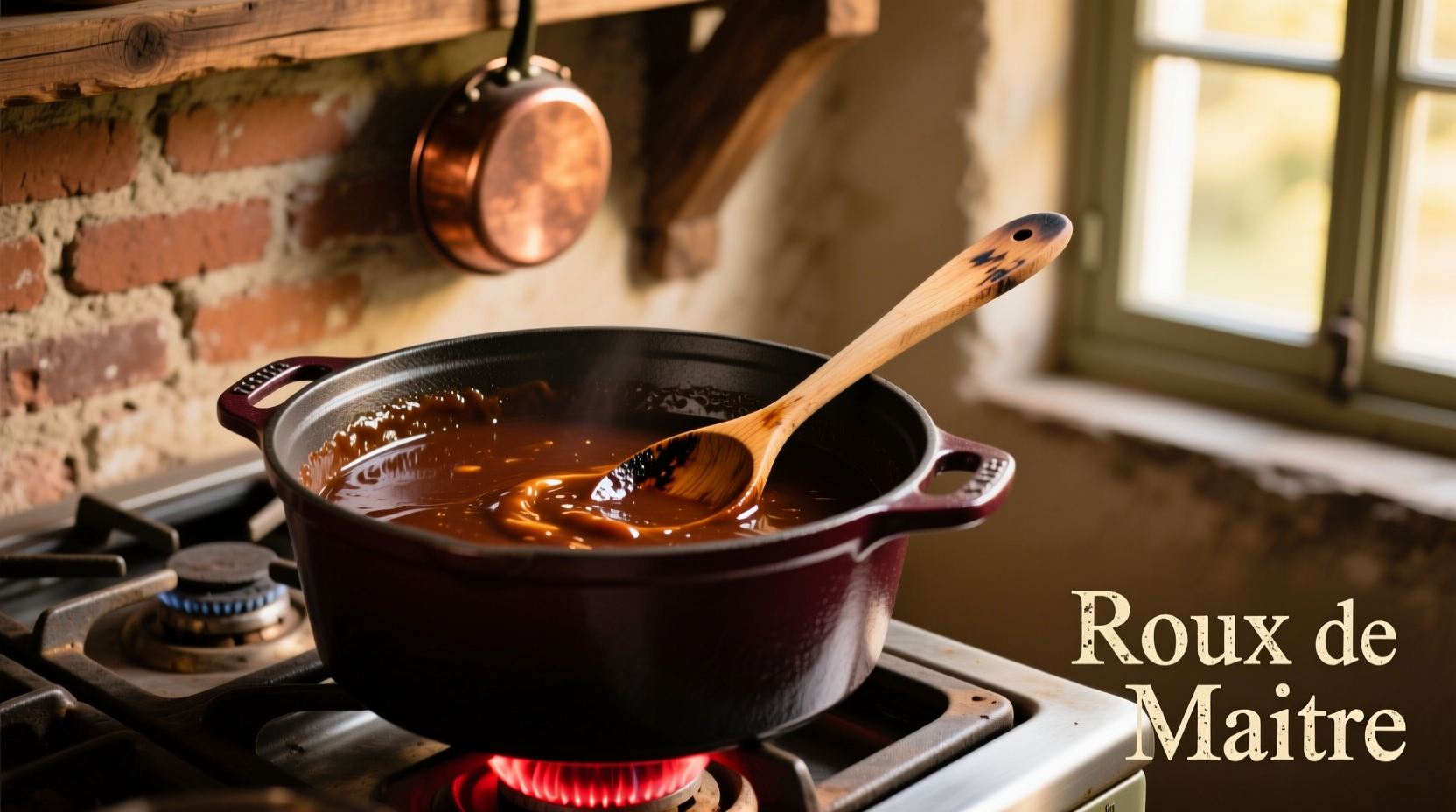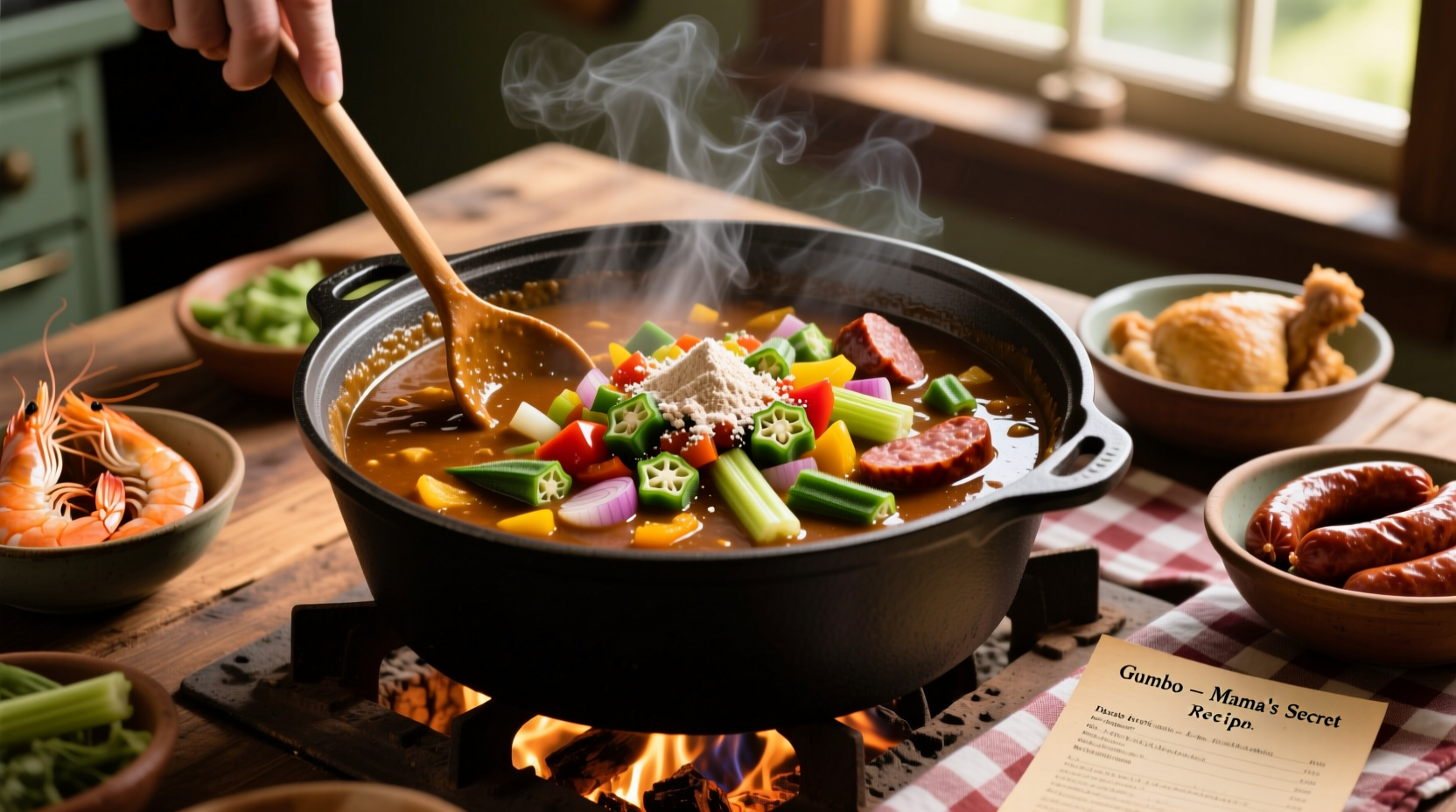Mastering gumbo isn't just about following steps—it's understanding the cultural heartbeat of Louisiana cooking. Whether you're preparing a traditional chicken and sausage version or a coastal seafood variation, the magic happens in the roux and the slow melding of flavors. This guide delivers everything you need to create an authentic, restaurant-quality gumbo in your own kitchen, complete with professional techniques most home cooks miss.
The Essential Gumbo Framework
Gumbo's beauty lies in its structure. Follow this proven framework regardless of your protein choice:
- Create a properly cooked dark roux (the flavor foundation)
- Sauté the "holy trinity" vegetables
- Add protein and build layers of flavor
- Simmer with stock and seasonings
- Finish with the "holy trinity" of filé powder, hot sauce, and rice
What Makes Gumbo Authentic: Beyond the Basics
Many recipes miss what separates good gumbo from great gumbo. Authentic Louisiana gumbo evolved from a fusion of West African, French, Spanish, and Choctaw culinary traditions. According to the Louisiana State University Agricultural Center, the dish's development reflects centuries of cultural exchange in the region.
| Gumbo Type | Key Proteins | Distinctive Features | Regional Origin |
|---|---|---|---|
| Creole | Shrimp, crab, tomatoes | Tomato base, seafood-forward | New Orleans |
| Cajun | Chicken, andouille sausage | No tomatoes, darker roux | Rural Louisiana |
| Seafood | Shrimp, crab, oysters | Lighter roux, seafood stock | Coastal communities |
The Roux: Gumbo's Flavor Foundation
Your gumbo lives or dies by the roux. This simple mixture of equal parts fat and flour requires patience but delivers unmatched depth:
- Traditional method: Cook 1 cup oil and 1 cup flour over medium-low heat for 30-45 minutes, stirring constantly until it reaches milk chocolate color
- Pro tip: Keep a bowl of cold water nearby—if your roux catches fire, carefully pour water to extinguish flames while protecting yourself
- Warning: Never leave roux unattended; it can burn in seconds

Step-by-Step Gumbo Preparation
Stage 1: Building the Flavor Base (30-45 minutes)
- Prepare a dark roux as described above
- Add 1 cup chopped onions, ¾ cup celery, and ¾ cup bell peppers (the "holy trinity")
- Cook vegetables until soft but not browned (about 10 minutes)
- Add 3 minced garlic cloves and cook for 1 minute
Stage 2: Adding Proteins and Liquid (15 minutes)
- Stir in 1 pound diced chicken thighs and 1 pound sliced andouille sausage
- Cook until proteins are browned (about 8 minutes)
- Gradually whisk in 6 cups chicken stock
- Add 2 bay leaves, 1 teaspoon thyme, 1 teaspoon filé powder, and cayenne to taste
Stage 3: The Essential Simmer (1-4 hours)
- Bring to a gentle boil, then reduce heat to low
- Cover and simmer for minimum 1 hour (4 hours preferred for best flavor)
- Skim fat from surface periodically
- Add okra or file powder in last 15 minutes if using
Critical Timing Considerations
Understanding when to apply heat makes all the difference in how do you cook gumbo properly. The Smithsonian Food History Project documents that traditional gumbo preparation follows a specific timeline that modern shortcuts often ignore:
- Roux development: 30-45 minutes (non-negotiable for proper flavor)
- Vegetable sauté: 10 minutes (too long causes bitterness)
- Initial simmer: 15 minutes uncovered (allows alcohol evaporation if using)
- Final simmer: Minimum 1 hour, ideally 4 hours (creates flavor integration)
Avoid These Common Gumbo Mistakes
Even experienced cooks make these errors when trying to learn how to make traditional gumbo:
- Rushing the roux: Light roux lacks depth; burnt roux ruins the entire batch
- Adding cold stock to hot roux: Causes lumps—always warm stock first
- Overcooking vegetables: Holy trinity should be softened, not caramelized
- Using water instead of proper stock: Weakens flavor foundation significantly
- Adding file powder while boiling: Causes stringiness—add only when off heat
Serving Your Perfect Gumbo
The final presentation matters as much as the cooking process when you want to cook gumbo like a Louisiana native:
- Serve over steamed white rice (never cooked in the gumbo)
- Offer file powder and hot sauce on the side for customization
- Garnish with sliced green onions just before serving
- Pair with French bread for dipping and soaking up extra broth
- Let gumbo rest 15 minutes before serving for flavors to settle
Gumbo Storage and Reheating Tips
Authentic gumbo often tastes better the next day as flavors continue to meld. For best results when you're cooking gumbo for meal prep:
- Cool completely before refrigerating (within 2 hours of cooking)
- Store in airtight containers for up to 4 days
- Freeze portions for up to 3 months (gumbo freezes exceptionally well)
- Reheat gently on stove—never boil vigorously when reheating
- Add a splash of stock when reheating to restore proper consistency
Frequently Asked Questions
What's the difference between Creole and Cajun gumbo?
Creole gumbo typically includes tomatoes and focuses on seafood, originating in New Orleans. Cajun gumbo comes from rural Louisiana, features a darker roux, and centers on chicken and sausage without tomatoes. Both use the holy trinity vegetables but differ in spice profiles and cultural origins.
Can I make gumbo without a dark roux?
You can make a lighter roux, but authentic Louisiana gumbo requires a dark chocolate-colored roux for its signature flavor. A lighter roux creates a fundamentally different dish that lacks the complex nutty, toasted notes essential to traditional gumbo. The roux development time cannot be shortcut without compromising authenticity.
How do I prevent my roux from burning?
Maintain medium-low heat, stir constantly with a wooden spoon, and never leave it unattended. Keep cold water nearby to extinguish any flames. If you see black specks, the roux has burned and must be discarded—no amount of stirring can fix it. The process requires patience; rushing leads to burnt roux.
When should I add file powder to gumbo?
Add file powder only when the gumbo is off the heat and ready to serve. Adding it while boiling causes stringiness and a gummy texture. Traditional Louisiana practice is to offer file powder at the table so each person can add their preferred amount to their individual bowl.
Why does my gumbo taste bitter?
Bitterness usually comes from a slightly burnt roux or overcooked holy trinity vegetables. To fix bitter gumbo, add a small amount of sugar or honey to balance flavors, or incorporate more stock to dilute the bitterness. Prevention is best—never rush the roux and remove vegetables from heat when just softened.











 浙公网安备
33010002000092号
浙公网安备
33010002000092号 浙B2-20120091-4
浙B2-20120091-4